Implementation, Consulting, Auditing & Certification at one place . We focus on taking your business to new heights.
ISO 13485 Certification in Sweden– ISO 13485 is an international standard that specifies the requirements for a quality management system (QMS) for medical devices. It is intended to ensure that medical devices are consistently designed, developed, produced, and monitored in a manner that meets regulatory requirements and maintains their safety and effectiveness.
ISO 13485:2016 certification in Sweden is a process by which a third-party certification body audits a company’s QMS to ensure that it meets the requirements of the ISO 13485:2016 in Sweden. If a company successfully passes the audit and demonstrates that their QMS meets the requirements of the standard, they are issued an ISO 13485 in Sweden.
Having an ISO 13485 certification in Sweden is often a requirement for companies involved in the design, development, production, and distribution of medical devices, and it can provide assurance to customers and regulatory authorities that the company’s QMS is effective and compliant with the standard.
To obtain ISO 13485 certification in Sweden, a company must follow these general steps:
It is important to note that obtaining ISO 13485 certification in Sweden is an ongoing process. The company must continually monitor and improve its quality management system to maintain compliance with the standard.
The main purpose of ISO 13485:2016 in Sweden is to establish a quality management system (QMS) that ensures the design, development, production, installation, and servicing of medical devices are done in a manner that consistently meets applicable regulatory requirements and maintains the safety and effectiveness of the device.
The ISO 13485 standard specifies the requirements for a QMS for medical devices in Sweden, ISO 13485 certification can provide a range of benefits to organizations involved in the life cycle of medical devices. Here are some of the key ISO 13485 benefits in Sweden:
Overall, the purpose of ISO 13485 services in Sweden to provide a framework for ensuring the safety and effectiveness of medical devices while enhancing customer satisfaction and improving internal processes. Overall, ISO 13485 certification in Sweden can help organizations improve their product quality, regulatory compliance, customer satisfaction, efficiency, competitiveness, and market access, which can lead to increased profitability and growth.
ISO 13485 in Sweden sets out the requirements for a quality management system (QMS) for medical devices. The requirements of the standard are organized into eight main sections:
Overall, the ISO 13485 requirements in Sweden emphasize the need for a comprehensive and robust QMS that covers all aspects of the life cycle of medical devices, from design and development to servicing and post-market surveillance. The standard also emphasizes the importance of continuous improvement and risk management in ensuring the safety and effectiveness of medical devices.
ISO 13485 certification is relevant to any organization that is involved in the life cycle of medical devices, including their design, development, production, installation, Medical software developers, Calibration and testing labs, Research and development organizations and servicing. This can include manufacturers, suppliers, distributors, importers, and other organizations that are involved in the production and distribution of medical devices.
ISO 13485 certification in Sweden is particularly important for organizations that export their medical devices to different countries or regions, as it can help ensure regulatory compliance with different jurisdictions. Many countries and regions require ISO 13485 in Sweden as a prerequisite for market access, and some may even require additional certification or conformity assessment procedures.
ISO 13485 certification in Sweden is also important for organizations that are seeking to improve their product quality, customer satisfaction, and internal processes. The certification can provide a framework for establishing a comprehensive quality management system that can help organizations optimize their operations and meet customer needs and expectations.
The ISO 13485 certification process typically involves the following steps:
Overall, the ISO 13485 certification process in Sweden can take several months or weeks to complete, and requires significant investment of time, resources, and expertise. However, the benefits of certification can include improved product quality, regulatory compliance, and customer satisfaction, which can ultimately lead to greater market success and competitiveness.
The documents required for ISO 13485 certification in Sweden will vary depending on the specific requirements of the standard and the size and complexity of the organization. However, some common documents that are typically required for ISO 13485 certification include:
Overall, ISO 13485 documentation in Sweden can be extensive and complex, and may require significant investment of time and resources to develop and maintain. However, a well-designed and implemented quality management system can provide significant benefits for the organization, including improved product quality, regulatory compliance, and customer satisfaction.
ISO 13485 consultants in Sweden are professionals who provide consulting services to organizations seeking to develop, implement, or maintain a quality management system that meets the requirements of the ISO 13485 in Sweden. These consultants typically have extensive experience in the medical device industry, as well as expertise in quality management systems, regulatory requirements, and ISO 13485 standards.
Some of the key roles and responsibilities of ISO 13485 consultants in Sweden may include:
Overall, ISO 13485 consultants can provide valuable expertise and guidance to help organizations develop and implement a quality management system that meets the requirements of the ISO 13485 standard and comply with regulatory requirements for medical devices.
ISO 13485 certification is provided by third-party certification bodies that are accredited by ISO’s International Accreditation Forum (IAF). These certification bodies are independent organizations that have been authorized to audit and certify organizations’ quality management systems against the requirements of the ISO 13485 in Sweden.
To obtain ISO 13485 certification in Sweden, organizations must undergo an initial certification audit, as well as ongoing surveillance and re-certification audits. During the certification audit, the certification body will review the organization’s quality management system to ensure that it meets the requirements of the ISO 13485 standard.
It’s important to note that ISO does not provide certification itself, but instead provides the standards that certification bodies use to evaluate organizations’ quality management systems. The certification process is independent of ISO and is typically performed by accredited certification bodies that are separate from ISO.
ISO 13485 is a quality management standard specifically designed for medical devices. The cost of obtaining ISO 13485 certification in Sweden can vary depending on a few factors, such as the size and complexity of the organization, the scope of certification, the location of the organization, and the certification body chosen for the audit.
Generally, the cost of obtaining ISO 13485 certification includes Gap Analysis, Training, Consulting, Certification Audit, Maintenance. However, it’s important to note that the benefits of ISO 13485 certification in Sweden, such as improved quality management and increased customer confidence, can outweigh the cost of certification.
An ISO 13485 audit is an assessment conducted by an accredited certification body to determine if a medical device manufacturer’s quality management system (QMS) is in compliance with the requirements of the ISO 13485 Certification in Sweden.
The ISO 13485 audit in Sweden process typically involves the following steps:
It’s important to note that the ISO 13485 audit process in Sweden can be rigorous, and it’s essential for medical device manufacturers to be prepared and have a well-established QMS in place to ensure a successful audit. The audit can also provide valuable feedback to improve the organization’s QMS and ultimately improve the quality and safety of its medical devices.
It’s important to note that the ISO 13485 certification process can be complex and time-consuming. Many medical device manufacturers choose to work with a ISO 13485 consultant in Sweden or ISO 13485 certification body in Sweden to help them navigate the process and ensure a successful certification.
To get ISO 13485 certification, medical device manufacturers need to follow the below steps:
If you are looking to obtain ISO 13485 certification in Sweden for your organization or need to improve your existing system, hiring an ISO 13485 consultant in Sweden can be a valuable investment.
Here are some steps to help you find and hire a qualified ISO 13485 consultant in Sweden:
By following these steps, you can find and hire a qualified ISO 13485 consultant in Sweden to help your organization achieve certification or improve your existing quality management system.
ISO 13485 certification services include improved product quality, increased customer confidence, enhanced market access, compliance with regulatory requirements, streamlined processes, and potential cost savings through improved efficiency and effectiveness in the medical device manufacturing and supply chain processes.
ISO 13485 certification includes Medical device manufacturers, suppliers, and other organizations involved in the design, development, production, installation, and servicing of medical devices should consider obtaining.
ISO 13485 certification involves undergoing an audit by a certification body to assess an organization’s compliance with the requirements of ISO 13485 standard, which outlines the quality management system (QMS) requirements for medical device manufacturers and related organizations.
ISO 13485 certification cost varies depending on various factors such as the size and complexity of the organization, location, certification body, scope of certification, and additional services required. For more information you can contact us.
ISO 13485 Certification, undergo an external audit by a certification body, and address any findings or non-conformities identified during the audit. For more information you can contact us.
We provide ISO 13485 Consultant services, the certification bodies are independent organizations that assess Medical device manufacturers of the ISO 13485 standard, based on their competence and impartiality.
A 13485 certification is typically valid for three years. However, it is important to note that the certification body may conduct surveillance audits during this period to ensure that the organization continues to meet the requirements of the standard.





















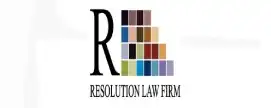

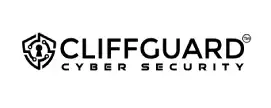
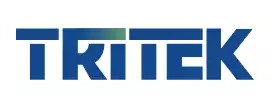
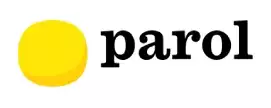
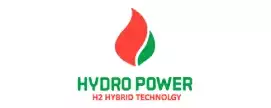
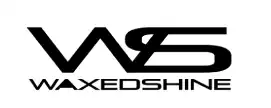
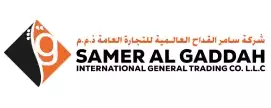

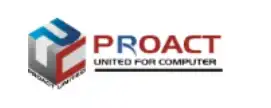
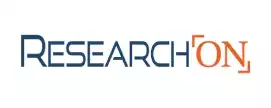
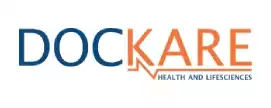

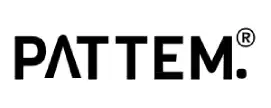

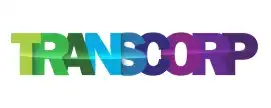
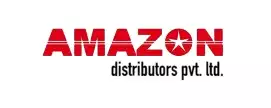
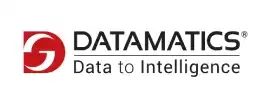
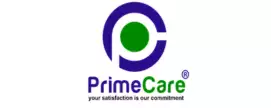










B2BCERT is a Solutions & Service organization, specialized in management consulting, Trainings, Assessments, Certification & Managed Services
MOST SEARCHED ON B2BCERT: ISO 9001 Certification | CE Certification | ISO 22000 Certification | NEMA Certification | ISO 27701 Certification | ISO 27032 Certification | ISO 22483 Certification | REACH Certification | ISO 22301 Certification | ISO 42001 Certification | ISO 41001 Certification | ISO 21001 Certification | ISO 15189 Certification | GMP Certification | GDPR Certification | GDP Certification | GLP Certification | HIPAA Certification | PCI DSS Certification | SOC 1 Certification | KOSHER Certification | NEMA Certification | Certificate of Conformity | GACP Certification | FSSC 22000 Certification | OHSAS 18001 Certification | HACCP Certification | SA 8000 Certification | SOC 2 Certification | VAPT Certification | ROHS Certification | BIFMA Certification | FCC Certification | HALAL Certification
ISO CERTIFICATIONS: ISO 9001 Certification | ISO 14001 Certification | ISO 45001 Certification | ISO 22000 Certification | ISO 27001 Certification | ISO 13485 Certification | ISO 17025 Certification | ISO 27701 Certification | ISO 20000-1 Certification | ISO 27032 Certification | ISO 22483 Certification | ISO 26000 Certification | ISO 22301 Certification | ISO 42001 Certification | ISO 27017 Certification | ISO 27018 Certification | ISO 50001 Certification | ISO 27014 Certification | ISO 29990 Certification | ISO 37001 Certification | ISO 41001 Certification | ISO 21001 Certification | ISO 55001 Certification | ISO 28000 Certification | ISO 22716 Certification | ISO 15189 Certification | ISO 41001 Certification
PRODUCT CERTIFICATIONS: FSSC 22000 Certification | OHSAS 18001 Certification | HACCP Certification | SA 8000 Certification | GMP Certification | GDPR Certification | GDP Certification | GLP Certification | HIPAA Certification | PCI DSS Certification | SOC 1 Certification | SOC 2 Certification | VAPT Certification | CE Certification | ROHS Certification | BIFMA Certification | FCC Certification | HALAL Certification | KOSHER Certification | NEMA Certification | REACH Certification | Certificate of Conformity | GHP Certification | Free Sale Certification | FDA Certification | GACP Certification
WHAT IS B2BCERT: B2BCERT is one of the leading service providers for International recognized standards and Management solutions for Business development, process Improvement, Consulting & Certification services for various International Standards like ISO 9001, ISO 14001, ISO 45001, ISO 22000, ISO 27001, ISO 20000, CE Marking, HACCP & many more. B2BCERT works on the values of trust, fairness & genuine respect for our customers, employees, and business partners.B2BCERT provides internationally recognized standards and management solutions, specializing in ISO and related certification services. Headquartered in Bangalore, India, we have a global presence in the Middle East and Africa. Our team of 30+ professionals ensures tailored solutions by partnering with leading certification firms.
B2BCERT Serves In: India | Nepal | Singapore | Afghanistan | Philippines | Malaysia | Jordan | Turkey | Sri Lanka | Saudi Arabia | Oman | UAE | Kuwait | Yemen | Qatar | Lebanon | Iran | Iraq | Bahrain | South Africa | Egypt | Nigeria | Kenya | Ghana | Tanzania | Zimbabwe | Cameroon | Uganda | USA | UK | Germany | Australia | New Zealand | Canada | Italy | Botswana | Brunei | Cambodia |
Service providing Sectors: Information Security | Manufacturing | Software Companies | Pharmaceuticals | Architecture | Construction | Food & Beverages | News & media | Science & Biotechnology | Electronics Industry | Telecommunications | Hospitals | Import & Export Businesses | Schools & Colleges | Textile Industries | Banks | Aerospace Manufacturing | Hotels & Restaurants | Organic Products | Mining & Renewable Business | Real Estate Business | Public Administration | Wholesale Trade | Supply Chain Management | Agrochemicals | Government Services | Electricity | Regulatory Agencies | Fitness and Wellness | Property Management | Rental Services | Warehousing | Delivery Services | Stores and Shops | IT Support | Event Planning | Consulting | Financial Advisory |
WHY B2BCERT: 1. Expertise Across Standards: B2BCERT is a leader in providing comprehensive solutions for a wide range of international standards, including ISO 9001, ISO 14001, ISO 45001, ISO 22000, ISO 27001, ISO 20000, CE Marking, and HACCP. Our deep knowledge ensures that your business meets and exceeds industry benchmarks with confidence. 2. Tailored Solutions: We understand that every organization is unique. B2BCERT offers customized consulting and certification services designed to fit your specific needs and objectives. Our team works closely with you to develop strategies that enhance your business processes and meet regulatory requirements.3. Global Presence: With headquarters in Bangalore, India, and a strong foothold in the Middle East and Africa, B2BCERT combines local expertise with a global perspective. Our international reach allows us to provide consistent, high-quality service wherever you operate.4. Trusted Partners: We collaborate with leading certification firms to offer you the best possible service. Our established relationships with top certification bodies ensure that you receive credible and widely recognized certifications that enhance your business’s reputation.5. Commitment to Values: At B2BCERT, our core values of trust, fairness, and respect drive everything we do. We are dedicated to building lasting relationships based on integrity and genuine respect for our clients, employees, and partners.6. Professional Team: Our team of over 30 skilled professionals brings a wealth of experience and dedication to every project. We are committed to delivering excellence and supporting you through every step of your certification journey.7. Comprehensive Support: From initial consultation to certification and beyond, B2BCERT provides end-to-end support. We are here to guide you through the complexities of compliance and help you achieve your business goals efficiently and effectively.